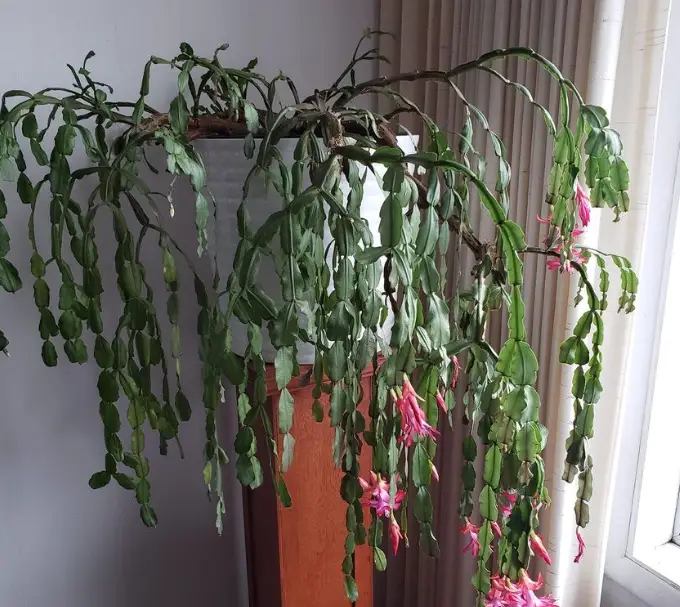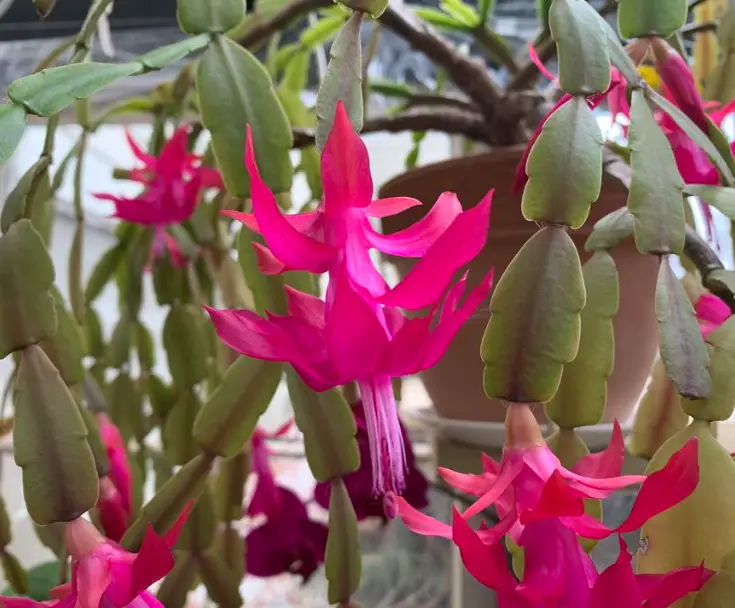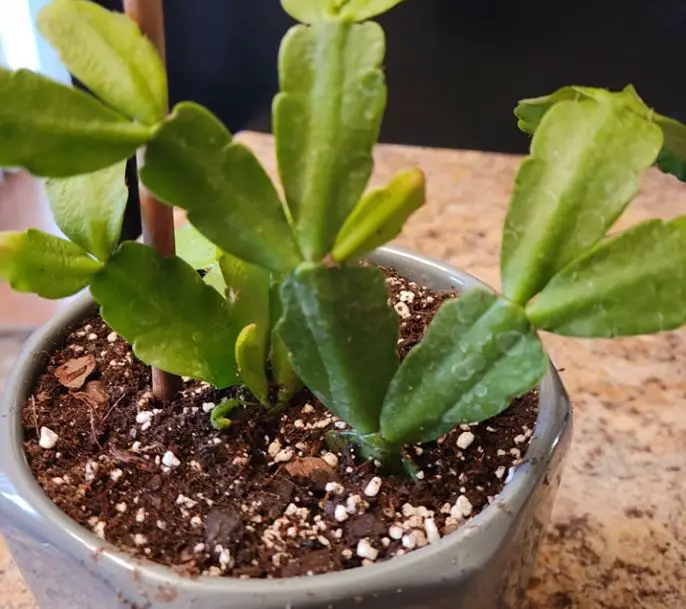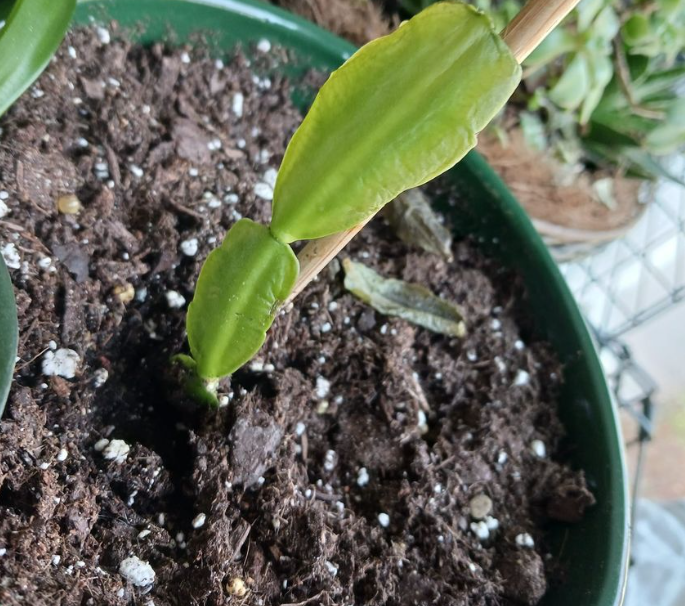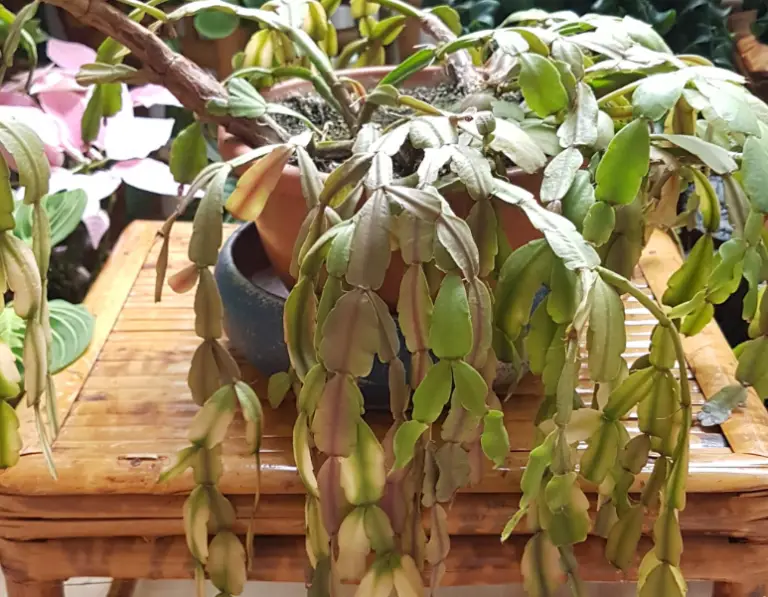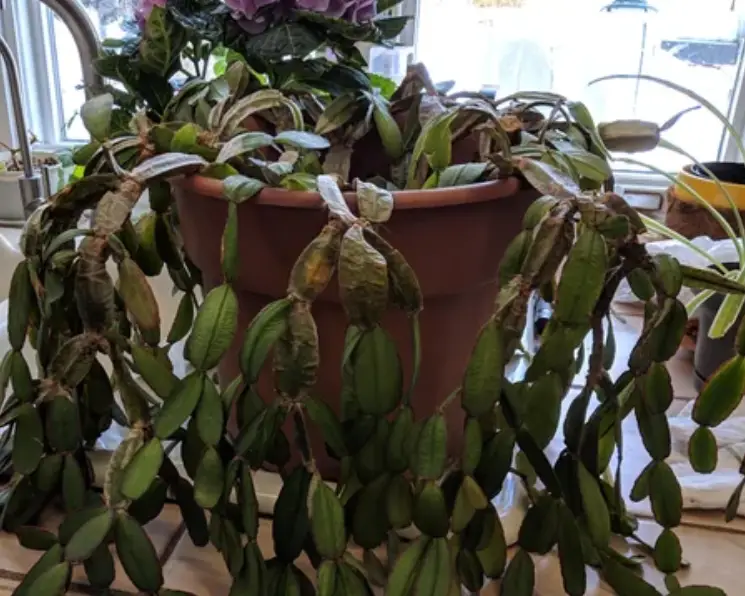Reasons Christmas Cactus Leaves are Turning Red and How to Fix
It is impossible to pass by a flower store, especially during Christmas, and fail to notice a Christmas cactus. The brilliant red, pink, yellow, orange, white, or purple flowers will convince you to bring one home. However, the plant will need ideal conditions to remain healthy and attractive.
Christmas cactus leaves turning purple or red signifies that everything is not well with your holiday plant. Possibly the plant is not receiving enough light, or it’s getting too much direct sunlight. Overwatering and poor nutrient supply are also possible causes.
It’s important to conduct a speedy investigation into the matter to save the plant. In this guide, I have provided all possible reasons why your cactus turns red and what you should do to fix the problem.
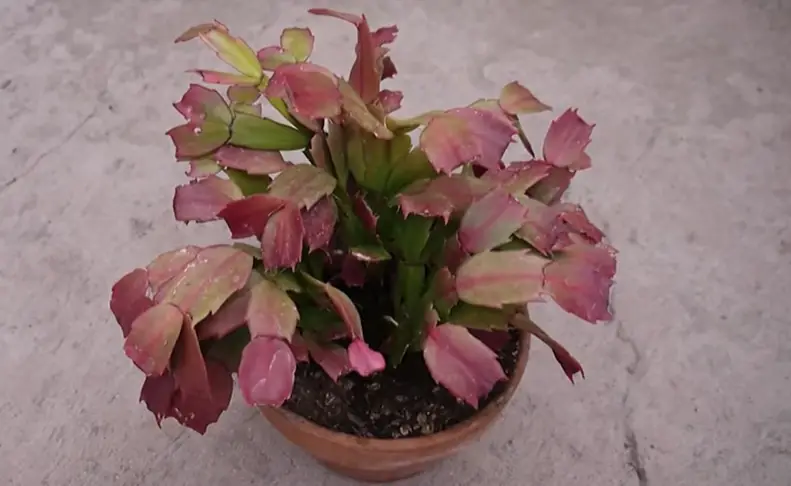
Why Christmas cactus leaves are turning red
Cacti hardly change their leaves’ color; however, it can still happen due to the following issues:
1. Overexposure to direct sunlight
Christmas cacti’s natural habitat is tropical forests, and they grow attached to trees. The amount of direct sunlight Christmas cacti need is quite minimal. They require bright, indirect light, so they are mostly kept indoors. They can also grow outside but under shade.
All plants need sunlight to enable photosynthesis, and a lack of sunlight will prevent the Christmas cactus from flowering. However, too much exposure to sunlight will damage the plant. Cactus turning purple or red is a common sign of cactus sunburn.
2. Watering problem
Christmas cactus leaves can store water longer than other plants, requiring less watering. Water ensures nutrients are transported to the roots, but too much water around the plant will hinder oxygen from reaching the roots.
Insufficient or too much water will make your Christmas cactus leaves turn red. Both conditions affect the health of the cactus roots and, as a result, cause poor uptake of important supplies to the rest of the plant.
3. Pest Infestation
Houseplant pests such as aphids, scale insects, and mealybugs can infest your Christmas cactus, causing its leaves to turn red. The pest will feed on the sap or roots of the Christmas cactus, causing leaf deformity and hindering growth.
The pest might have come with the Christmas cactus or another house plant you bought recently or could have crept from elsewhere. If not controlled, the pests can also spread to other plants causing havoc to your little garden.
4. Root Infection
When you overwater a Christmas cactus, you will prevent oxygen from reaching the roots resulting in the growth of fungi and bacteria. The fungus will cause the root and stem to rot. Christmas cactus root rot is a serious condition that can cause many other problems.
A plant feeds through the roots, and the whole plant will be unhealthy when the roots are affected. One of the signs of an unhealthy Christmas cactus is red leaves. If no action is taken, then the plant dies slowly.
5. Nutrition Deficiency
Plants require enough nutrients to thrive and flower. In their native home, Christmas cacti acquire plenty of nutrients from decomposing plant matter.
Also, at the nursery, the Christmas cactus is fed with enough nutrients from fertilizer that can last for a year or two. However, as the plant grows, the nutrients get depleted or lost as water escapes through the drainage holes.
Red foliage will appear because of magnesium deficiency, mainly during winter. If the leaves turn red, but the plant appears healthy, the problem could be a lack of sufficient phosphorus in the soil.
However, if only the tips of the leaves have turned red during the spring season, the redness could just be the formation of new segments and should not worry you.
What to do
A Christmas cactus turning red is a problem that needs to be diagnosed and fixed immediately. Here are some tips on how to solve the above problems.
1. Move the Christmas cactus away from direct sunlight
A Christmas cactus requires sunlight but should be indirect. Direct sunlight will cause sunburns and eventually kill the plant. Ensure to put your Christmas cactus in a bright room with indirect sunlight to thrive.
During winter, you must keep it in the darkness for at least twelve hours daily for six to eight weeks to encourage the Christmas cactus bloom.
2. Inspect and control pests
You can use a pesticide or agricultural oil like neem to get rid of pests. Isopropyl alcohol is also effective in getting rid of mealybugs on cacti. Insect sprays should be used as directed by the manufacturers.
If the pests have overwhelmingly destroyed the Christmas cactus, you may have to discard the plant and get a new one. Ensure to spray all the plants in your garden because pests might also have infested them.
3. Treat root infection
If your Christmas cactus has a root infection, remove it from the soil and repot the plant in fresh soil. First, you should get suitable soil for a Christmas cactus (potting soil mixed with river sand) to ensure proper water drainage. Lack of good drainage causes root rot.
Ensure the pot is big enough to accommodate the growth of the plant. If the roots are rotten, you should cut out the rotten parts before planting the Christmas cactus in a new pot. The cutting scissors should first be disinfected.
You should only water the plant when 1 inch of the topsoil is dry to prevent problems of root rot and fungal infections.
4. Give your Christmas cactus enough nutrient
Just like humans require a balanced diet, your Christmas cactus requires proper nutrients to thrive, and putting in the right fertilizer is essential. Christmas cactus fertilizer requirements vary based on the season of the year.
You should fertilize a Christmas cactus in spring when the plant enters active growth. Use a recommended liquid houseplant fertilizer every month until late summer.
To correct the magnesium deficiency, apply Epsom salt mixed at 1 teaspoon per gallon of water, but do not apply the same week you applied regular fertilizer. Spray the mixture on the plant every once in two weeks until it regains the green color.
5. Water sufficiently and carefully
Water your Christmas cactus only when one inch of the topsoil is dry. If you have been watering in excess, reduce the frequency. Also, ensure the pot has drainage holes, so water does not flood the soil.
If you have been under-watering, increase the frequency, but water only when one inch of the topsoil is dry. If the soil is too dry, poke holes to allow moisture to the bottom of the pot.
Conclusion
The leaves of a Christmas cactus turning red indicates that all is not well. You need to identify the problem and fix it swiftly. Common causes include too much sunlight exposure, underwatering, overwatering, pests, root infection, and insufficient nutrients.
Ensure to put the right amount of water because too much will cause root infections. Use the right soil and adequate fertilizer to supply the plant with nutrients. Finally, move your Christmas cactus away from direct sunlight and keep it in a bright room with indirect sunlight.
References
“Holiday Cactus,” University of Wisconsin-Madison
“How to care for and get your holiday cactus to rebloom,” Michigan State University
My name is Diane M Lewik, and I am the founder of this website. I am a degree holder in plant biology from the University of California – Berkeley. Over years, I have cultivated a vast collection of succulents and I have learned a great deal about how to grow and care for these unique plants.
